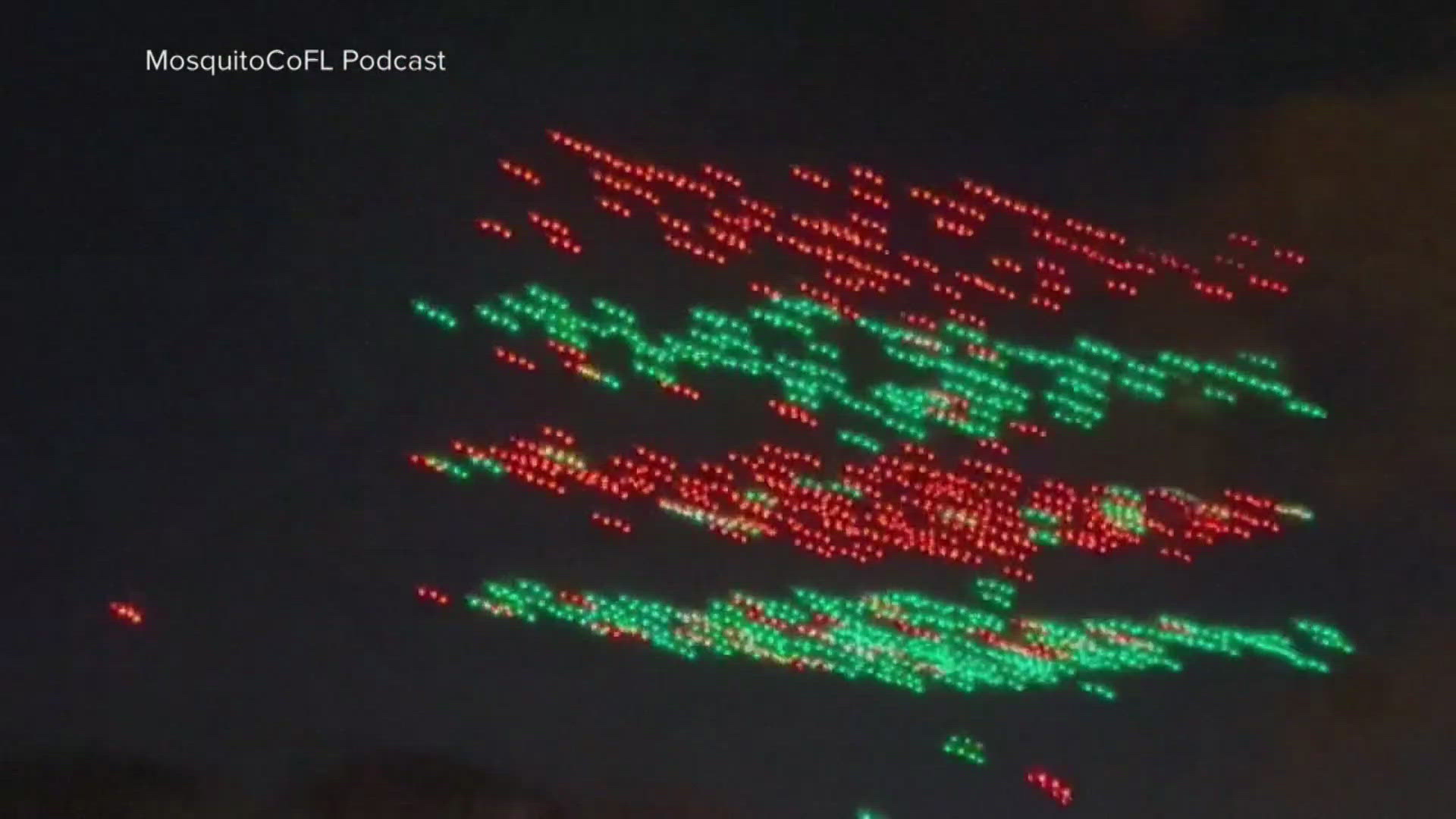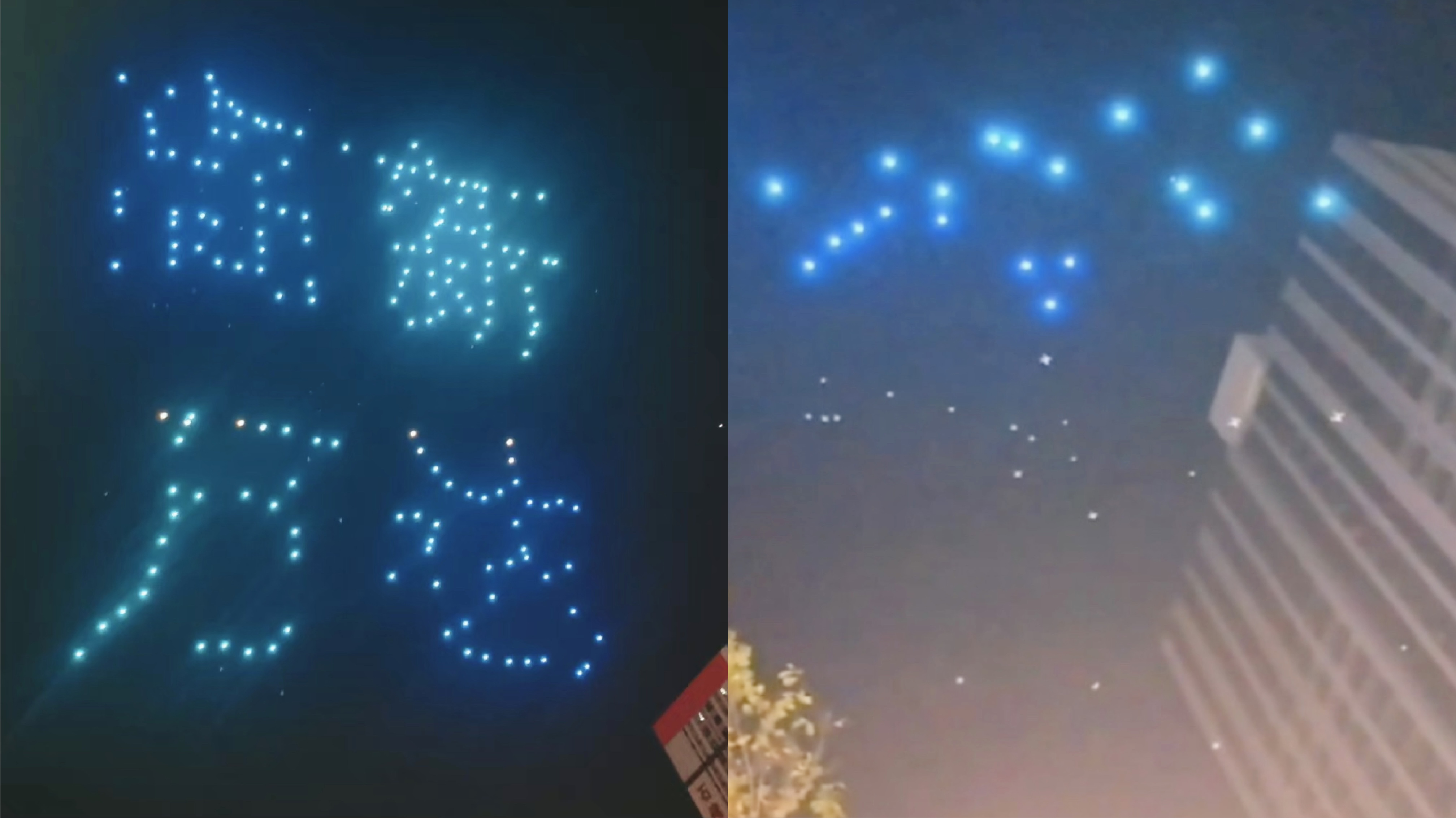Drone show crash—those spectacular failures that can turn a dazzling light show into a chaotic mess. This guide dives into the world of drone show mishaps, exploring the various causes, consequences, and preventative measures. We’ll cover everything from software glitches and hardware malfunctions to environmental factors and human error, offering insights into how these spectacular events unfold and what can be done to prevent them.
We’ll examine safety protocols, regulations, and technological advancements designed to enhance the reliability and safety of drone shows. From pre-flight checks and emergency procedures to the role of GPS and redundant systems, we’ll unpack the crucial elements needed to ensure a successful and safe aerial display. Real-world case studies will illustrate the importance of these measures and the consequences of neglecting them.
Drone show crashes are unfortunately becoming more common, highlighting the need for better safety protocols. A recent example that really drove this point home was the orlando drone show accident , which involved a spectacular malfunction. Analyzing incidents like this helps us understand the technical and logistical challenges involved in running a successful and safe drone show.
Finally, we’ll look ahead to the future of drone show safety, exploring emerging technologies and strategies that promise to make these breathtaking displays even safer.
Drone Show Crash Analysis: Understanding Causes, Prevention, and Future Implications
Drone shows, while visually stunning, carry inherent risks. Understanding the various factors contributing to crashes, implementing robust safety protocols, and embracing technological advancements are crucial for ensuring the safe and successful execution of these spectacular events. This article delves into the intricacies of drone show crashes, examining their causes, consequences, and the path towards a safer future for this rapidly evolving technology.
Types of Drone Show Crashes
Drone show crashes can stem from a multitude of factors, encompassing software, hardware, environmental, and human errors. Understanding these diverse causes is vital for developing effective preventative measures.
| Crash Type | Cause | Damage | Prevention Strategies |
|---|---|---|---|
| Software Glitch | Programming errors, outdated firmware, communication failures | Loss of control, unintended maneuvers, collision | Regular software updates, rigorous testing, redundant control systems |
| Hardware Malfunction | Motor failure, battery issues, GPS sensor malfunction | Complete or partial loss of functionality, impact damage | Pre-flight checks, high-quality components, regular maintenance |
| Environmental Factors | Strong winds, rain, extreme temperatures | Loss of stability, reduced flight time, structural damage | Weather monitoring, appropriate flight planning, contingency plans |
| Human Error | Pilot error, inadequate training, poor communication | Collision, loss of control, damage to drones and surroundings | Comprehensive pilot training, clear communication protocols, emergency procedures |
Safety Protocols and Regulations
Stringent safety protocols and adherence to regulations are paramount in preventing drone show crashes. These measures encompass pre-flight checks, meticulous flight planning, and robust emergency procedures.
Pre-flight checks should include thorough inspections of each drone’s hardware and software, battery level verification, and GPS signal strength assessment. Flight planning should consider environmental factors, potential obstacles, and emergency landing zones. Effective communication between pilots and ground crew is crucial, particularly during complex maneuvers. Regulations vary by region and often involve licensing, operational limitations, and airspace restrictions.
Pilot training and experience are also key; well-trained pilots are better equipped to handle unexpected situations and minimize the risk of accidents.
Technological Advancements and Mitigation Strategies

Technological advancements play a crucial role in enhancing drone show safety. Redundant systems, advanced navigation, and autonomous emergency landing systems significantly reduce the likelihood of crashes.
| Technology | Advantages | Disadvantages |
|---|---|---|
| GPS and RTK GPS | Precise positioning, improved stability | Susceptible to signal interference, cost |
| Redundant Systems | Increased reliability, fail-safe mechanisms | Increased complexity, higher cost |
| Autonomous Emergency Landing Systems | Automated landing in case of failure, minimizing damage | Requires advanced software and hardware |
| Obstacle Avoidance Systems | Detection and avoidance of obstacles, enhancing safety | Computational cost, potential for false positives |
Impact and Consequences of Drone Show Crashes
Drone show crashes can have severe repercussions, encompassing risks to public safety, financial losses, and reputational damage. A hypothetical scenario of a drone malfunction during a large-scale show in a densely populated area could lead to injuries or property damage, substantial repair costs, insurance claims, legal battles, and significant negative publicity for the event organizers.
Case Studies of Drone Show Accidents

Analyzing past accidents provides valuable insights into the causes and consequences of drone show failures, enabling the development of more effective safety measures. While specific details of many incidents may not be publicly available due to confidentiality reasons, a review of publicly reported incidents reveals recurring themes of inadequate pre-flight checks, insufficient pilot training, and unforeseen environmental factors as major contributors to crashes.
- Case 1: A software glitch caused a swarm of drones to lose synchronization, resulting in multiple collisions and minor damage. The investigation revealed outdated firmware and insufficient testing as root causes. Recommendation: Implement stricter software testing protocols and regular updates.
- Case 2: Strong winds led to the loss of control of several drones, resulting in damage to some units and minor property damage. The investigation highlighted a lack of proper weather monitoring and contingency planning. Recommendation: Integrate real-time weather data into flight planning and establish emergency landing procedures.
- Case 3: A battery failure caused a drone to fall from a significant height, causing damage to the drone and potential injury to a nearby spectator (although none occurred). The investigation revealed a failure to adhere to proper battery maintenance and pre-flight checks. Recommendation: Implement stricter battery management protocols and mandatory pre-flight checks.
Future of Drone Show Safety

The future of drone show safety hinges on the continued development and implementation of advanced technologies and safety protocols. Artificial intelligence (AI) and machine learning (ML) will play a significant role in enhancing real-time risk assessment, autonomous decision-making, and predictive maintenance. Advancements in communication systems, such as enhanced bandwidth and low-latency networks, will improve the reliability of drone control and coordination.
A future drone show might involve a network of drones equipped with AI-powered obstacle avoidance systems, redundant control mechanisms, and real-time health monitoring, all coordinated by a sophisticated centralized control system with robust fail-safe mechanisms.
Outcome Summary: Drone Show Crash

Ultimately, preventing drone show crashes requires a multifaceted approach. It’s a combination of robust safety protocols, advanced technology, rigorous pilot training, and a commitment to adhering to regulations. By understanding the various factors that contribute to these incidents and implementing effective preventative measures, we can continue to enjoy the awe-inspiring spectacle of drone light shows while minimizing the risks involved.
Drone show crashes are unfortunately becoming more common, highlighting the need for rigorous safety protocols. To see how sophisticated and safe these shows can be, check out the impressive technology on display at the orlando drone show ; learning from their successes can help prevent future crashes and ensure the continued enjoyment of these amazing spectacles. Proper planning and execution are key to avoiding a drone show crash.
The future of drone shows is bright, and with continued innovation and vigilance, we can ensure these dazzling displays remain safe and captivating for years to come.
FAQ Resource
What is the average cost of repairing a crashed drone used in a show?
Repair costs vary widely depending on the extent of the damage and the drone model. Minor repairs might cost a few hundred dollars, while major damage could reach thousands.
What insurance is needed for drone shows?
Comprehensive liability insurance is crucial, covering potential damages to property and injuries to people. The specific coverage needed will depend on the scale and location of the show.
Are there specific licensing requirements for drone show pilots?
Licensing requirements vary by country and region. Check with your local aviation authority for specific regulations and necessary certifications.
What happens if a drone crashes into a populated area?
Drone show crashes are unfortunately becoming more common, highlighting the need for reliable and robust drone technology. To avoid such mishaps, consider the high-quality drones offered by companies like sky elements drones , known for their advanced safety features. Proper maintenance and pilot training, alongside choosing dependable equipment, are key to preventing future drone show crashes.
This can lead to serious legal consequences, including significant fines and potential lawsuits. The severity depends on the extent of the damage and injuries caused.